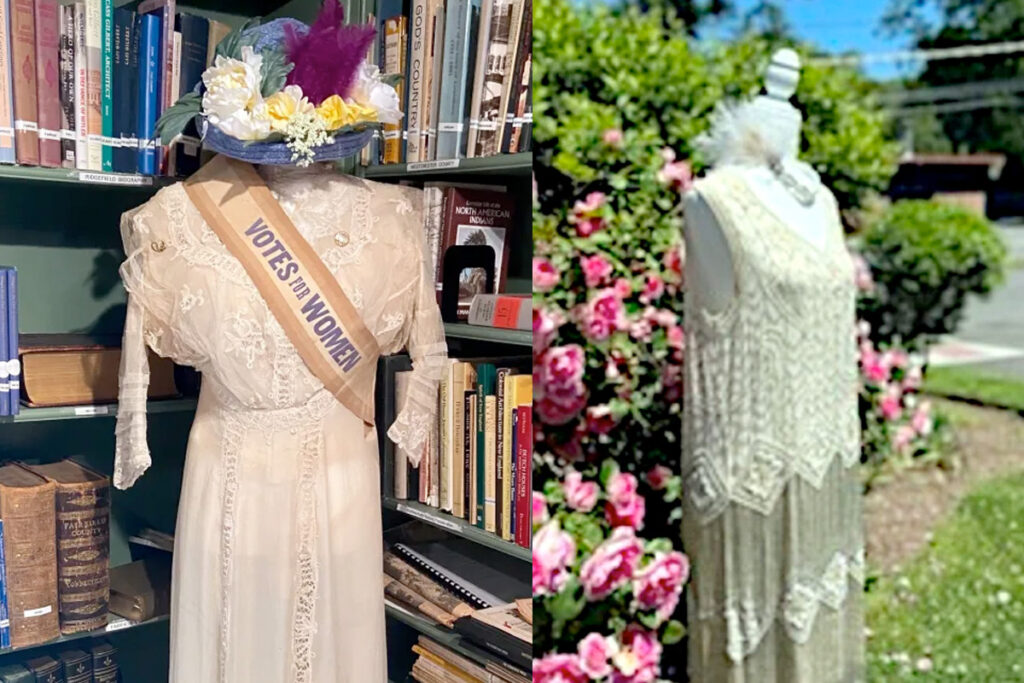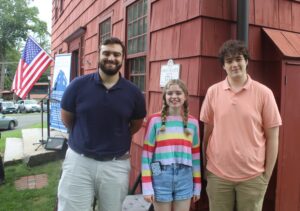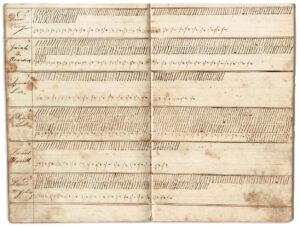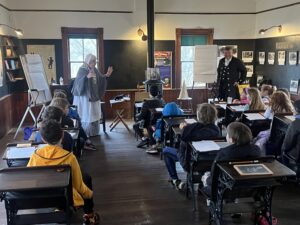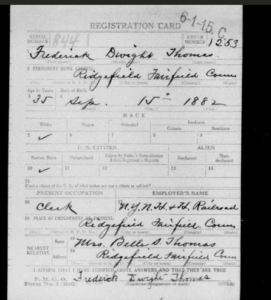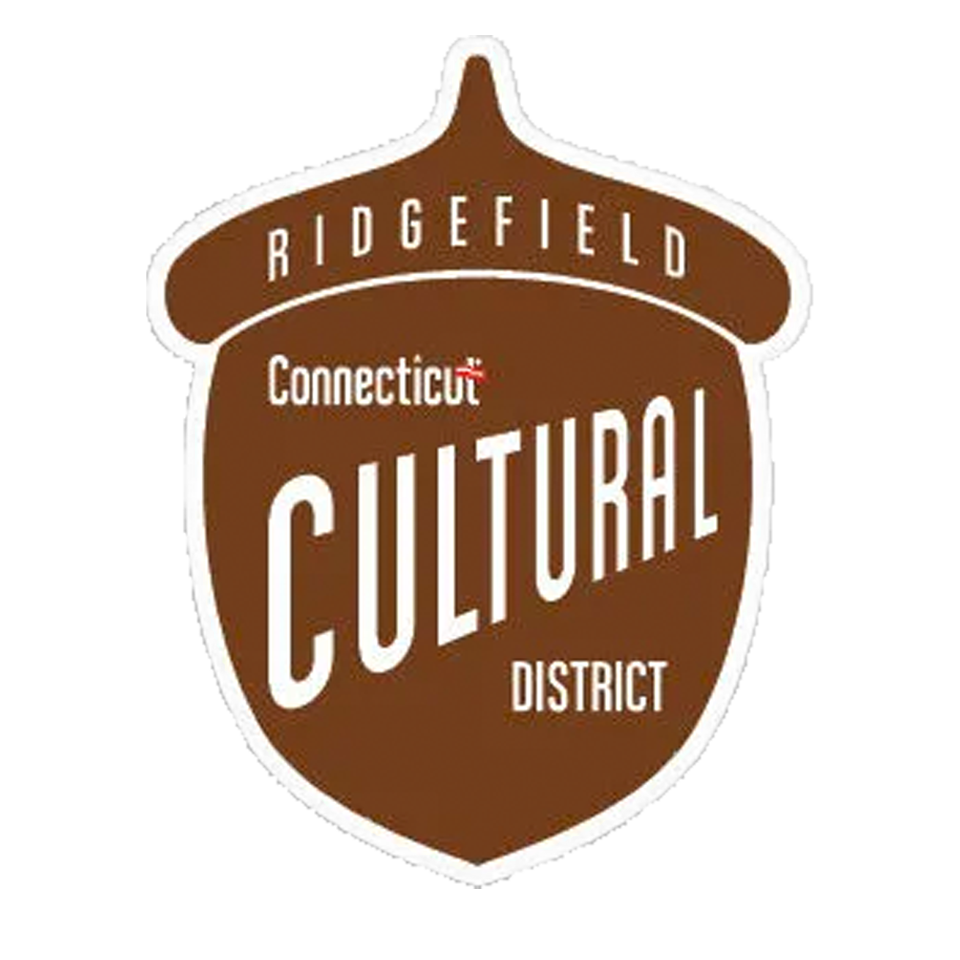The following items from the Historical Society’s archives were hand-selected and researched by our two Ridgefield High School interns, Sara Shepherd and Tyler Ingram.
Suffragist Dress
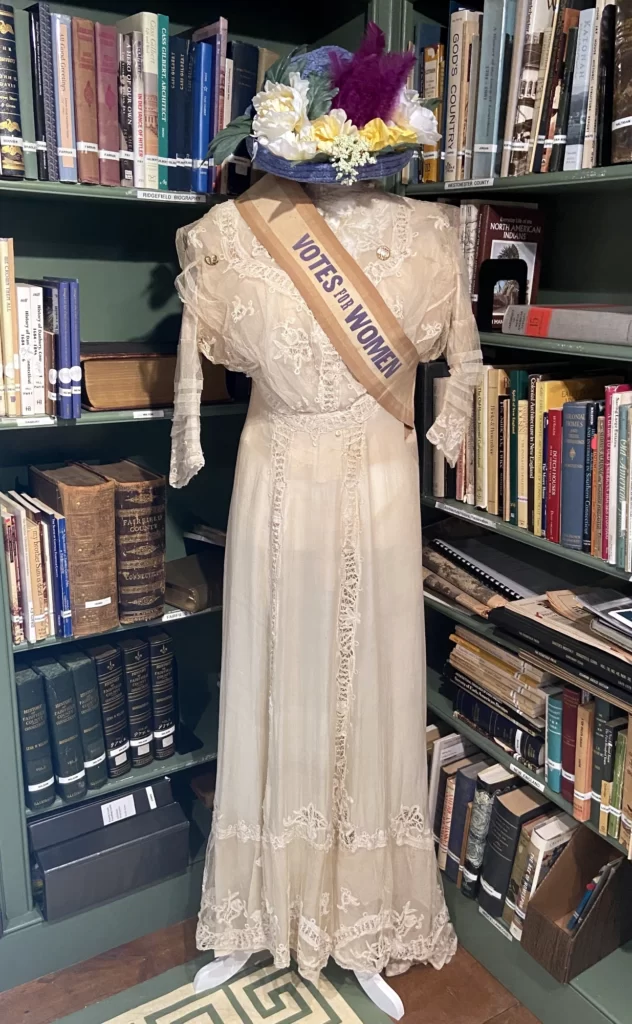
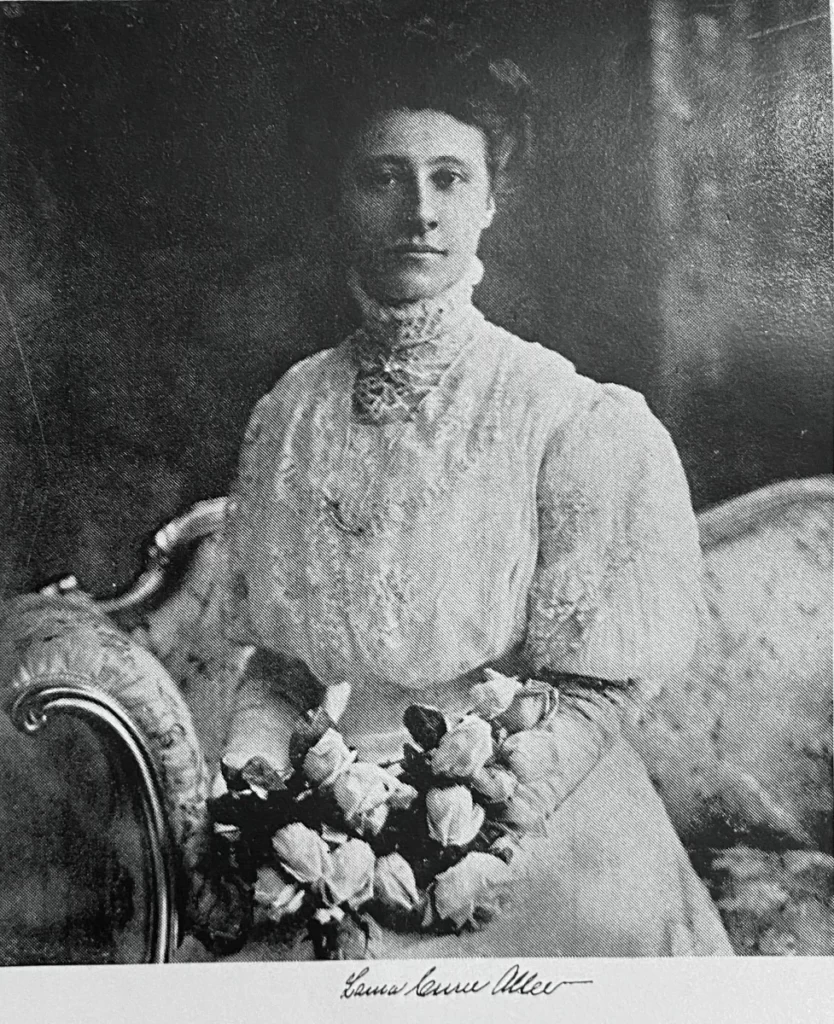
This dress was previously owned by Ridgefield resident and suffragist Laura Curie Allee Shields, until it was donated to the Ridgefield Historical Society a few years ago by her family members Melanie Detzer, Katrina Detzer Costello, and Curtis Detzer. Allee Shields was known in the area as one of the most passionate suffragists, and was a leader of Ridgefield’s Equal Franchise League, the predecessor of The League of Women Voters. She was able to get the attention of local communities, in a time in which suffragists were criticized and laughed at by many, through planning local events and writing letters to The Ridgefield Press, as described in her 1940 memoir entitled Memories. According to Isabel Campos-Anello in Remember the Ladies – Notable Women of Ridgefield, she was considered vital to the National Women’s Suffrage Association, as she even helped to persuade then-Senator Warren G. Harding of Tennessee to complete the ratification of the 19th Amendment. She was extremely passionate about education and historical preservation, and upon her death was remembered as a philanthropist by the community.
Due to its age, the dress is very delicate. It is likely the wedding gown of Laura Curie Allee Shields from her first wedding to Dr. William Allee in 1906, as it features a train in the back. The dress features handmade lace, going all the way up to the high neckline of the dress, a very popular style around the turn of the century. The dress has a “Votes for Women” sash placed on it, which also belonged to Mrs. Allee Shields but was likely never worn with this dress. Women’s fashion before winning the right to vote featured corsets, high necklines, and sweeping lengths, in comparison to the looser and shorter styles popularized with increased freedoms for women in the 1920s.

Flapper Dress
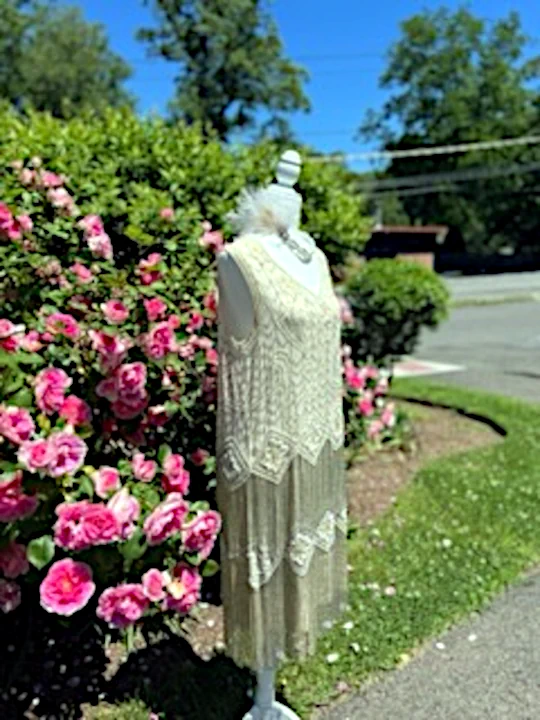
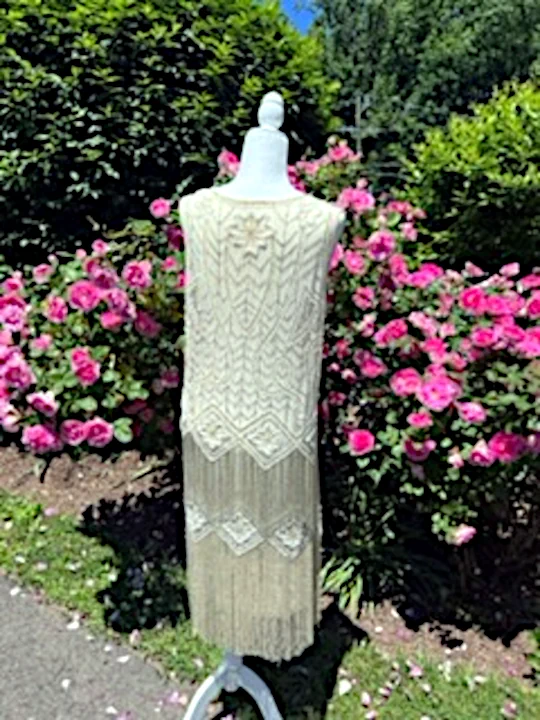
This dress is an example of what was worn in the 1920s by a flapper. It was gifted to the Ridgefield Historical Society a few years ago by Elaine Kelemen, a longtime Ridgefield resident who received it as a gift before donating it to our collection. Flappers were symbols of rebellion in the 20s, as their behavior and fashion went against traditional views of women. After gaining the right to vote in 1920, women began to embrace their freedom and express themselves in new ways, and flappers led the way for women reclaiming their own identities. This dress represents a change in women’s fashion as well, as previously modest and simple dresses were exchanged for more revealing and ornate ones like this.


